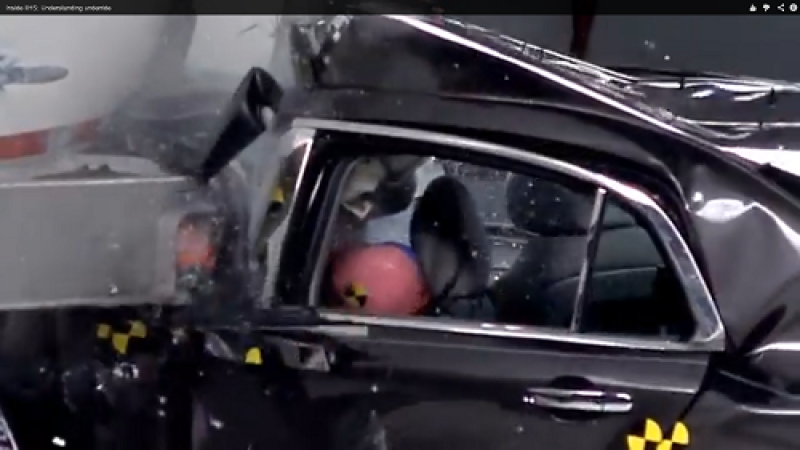The Insurance Institute For Highway Safety (IIHS) released a new video this week highlighting the on-going danger of tractor trailer design. The problem is a type of crash called underride. In such a crash, a car or light truck hits the rear of a tractor trailer, usually one parked by the side of the highway or roadway. When the cars hit the trailer straight on the results are bad, but when the car hits the rear of the trailer
Matt Brumbelow, a Senior Research Engineer explains how this problem became known, saying “A few years ago we did a study of frontal crashes of vehicles that had a good rating in our frontal crash tests and how people in those vehicles who were belted and had airbag deployment and were still being injured or killed. A lot of those crashes that we found were into the backs of large trucks.” Once the Institute discovered that well over 2,000 people per year were being killed in such crashes it took action. Mr. Brumbelow explained, “We wanted to look more closely at those and see what could be done to make those crashes more survivable.”
What the IIIHS did was purchase brand new trailers and conduct tests of the eight largest manufacturers’ products. Being the IIHS, it did not simply do one type of test either. It conducted three types of rear impact crashes. The car was run into the trailer full on, with 50 percent of the car hitting the back of the trailer, and the worst one of all in terms of testing, the 30 percent overlap. All the tests were conducted with 2010 Chevy Malibu sedans. That vehicle was chosen because it was a good performer in front crash tests, is typical of the design in the segment, which is the largest car segment, and the Institute does not say so, but it is also available at low cost relative to its competitors.
What the IIHS found is that there are a variety of designs for trailer rear impact protection. All meet government regulations (which are outdated and insufficient, go figure). However, some designs worked dramatically better than others. The manufacturers were receptive to the testing. The IIHS hopes that based on the testing all the manufacturers will adopt the best current designs.











